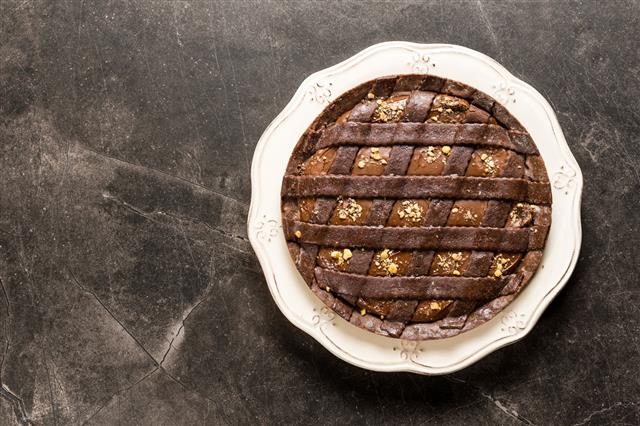
The key to getting the perfect pie lies in getting the crust just right. You wouldn’t want an undercooked, soggy, soft crust to go with your pie. The blind-baking technique can help you avoid this. In case you don’t have some pie weights for this step, here are some substitutes that could help you achieve the same results.
Tips to Avoid Shrinkage of the Pie Crust
Poke holes in the pastry with the help of a fork, this prevents the pastry from puffing up as well.
Leave about half an inch of the pastry above the rim of the pan, the shrinkage of the pastry won’t really be much noticeable that way.
If you have a sweet tooth or are a big fan of some hearty, seriously meaty stuff, there’s a pie to cater to all your whimsies.
Be it an intoxicating infusion of berries, spice, and sugar, a custard loaded with meringue, the oh-so-seductive touch of some bittersweet chocolate, or some veggie meaty heartiness; a good pie can fill all the nooks and crannies of your perpetually hungry stomach. Combine that with a buttery, crispy, melt-in-the-mouth crust, just the thought is enough to bring a tear to my eye.
A pie crust needs to be crisp, non-puffy, and baked to perfection. Blind baking is a technique commonly used to achieve this. This technique requires baking the crust partially before adding in the filling. Some weight is usually added while baking the pastry to ensure that the pastry doesn’t collapse on itself while cooking.
Usually, people use pie weights during blind baking, but we tell you, you don’t really need to invest in pie weights. Here are some alternatives that are lying around in your house and will surely help you get the same results.
Pie Weights Substitutes
Dried Beans
Here is a substitute that wouldn’t require extensive hunting in the pantry! Black beans, kidney beans, chickpeas; doesn’t really matter what you use, it’ll all do equally well. Just line your pastry with some parchment or butter paper before you put the dried beans. We’d suggest you tie the beans in a muslin cloth for easy removal of these blistering hot beans. You can store these beans in a moisture-free container and reuse them a few times.
Rice
When life gives you lemons make a lemon meringue pie, and when you don’t have pie weights, this trusty staple comes to your rescue. It helps in the uniform dissemination of heat throughout the pie crust and ensures its uniform cooking. Once again, just line the pastry with some parchment or butter paper and pour the rice on it. Moreover, you could use the buttery toasted rice to make pilaf, rather than just chucking it away.
Metal Objects
If you’re out of stock for rice and beans. Don’t panic, we’re sure you definitely would have these substitutes lying somewhere! Just line the pastry with some aluminum foil and just whatever small metal objects you could lay your hands on―coins, bolts, screws, forks, spoons, etc… It might be a good idea to wash these items thoroughly before using them. Be careful while removing these objects.
Two Pie Pans
If you’re not a big fan of using coins, bolts, and screws in your cooking, you could attempt to sandwich the pastry between pie pans. This way the pastry sits between the pans while it cooks and doesn’t collapse. Using two pie pans of similar thickness would ensure even heating all over. If you can manage to invert this assembly, it would ensure that the dough doesn’t shrink.
Glass Marbles or Polished River Rocks
Why just use them as home décor when they could work equally well in the kitchen? So line your pastry with some butter paper, tie the marbles/river rocks in a muslin cloth and use them as pie weights. These will ensure that the pie gets heated evenly. Make sure that you wash the marbles and river rocks before using them.
Although we have suggested that you use aluminum foil along with one of the substitutes, it is best if you could use parchment paper or butter paper instead as foil may cause the crust to be soggy.


















